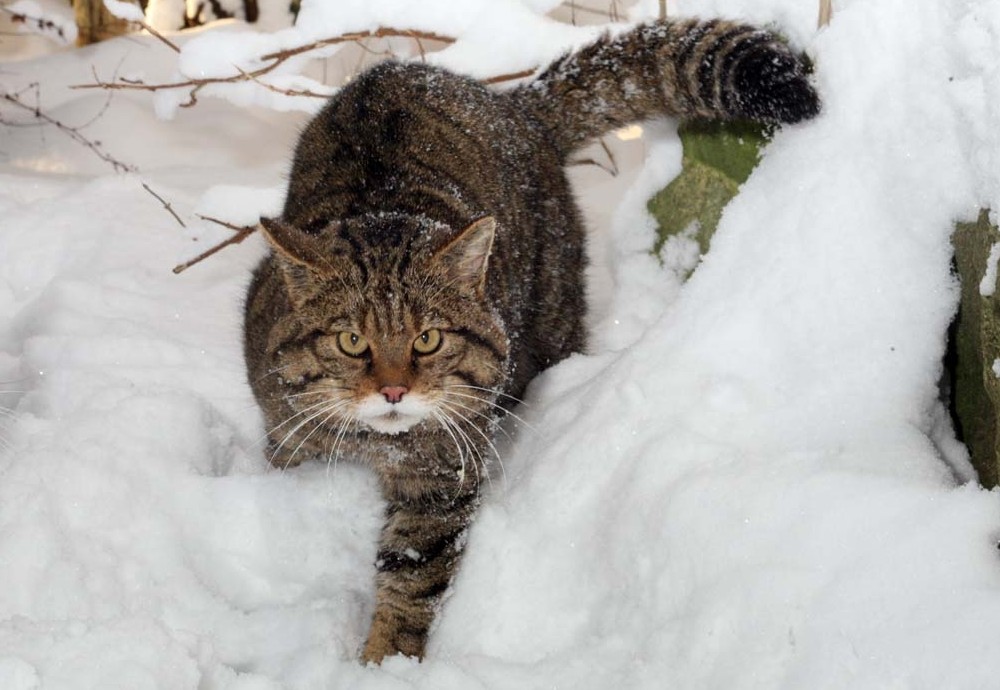Wildcat

Status
Native and critically endangered
Population
Perhaps as few as 400
Scientific name
Felis silvestris
The biggest threat to the survival of the Scottish wildcat, Felis silvestris grampia, is a familiar animal: the domestic cat, which has been in Britain since the Iron Age, about 3,000 years ago. The ancestry of domestic cats goes back 10,000 years to African wildcats, Felis silvestris lybica, in the Middle East, whose family tree split from that of other wildcats at least 130,000 years ago. The threat to wildcats comes from breeding with domestic cats, which erodes the separate genetic identity of wildcats, mixing their gene pool with that of domestic cats.
Wildcats look very similar to domestic tabby cats but are larger, have a stockier build and a thick bushy tail with distinct black bands and a blunt black tip. They are solitary and territorial, mostly crepuscular or nocturnal, and use several different hunting strategies. Larger prey, such as rabbits, are stalked from behind cover when possible, before rushing toward the prey and seizing it. Their dens are situated among large rocks on hill ground or between tree roots, or make use of old fox earths or badger setts.
Head-body length: 48 – 68cm
Tail length: 26 – 33cm (about half the head-body length)
Weight: 2.4 – 7.5kg
Lifespan: Up to 12 years
Reproduction
A single litter of up to seven kittens is born usually in April or May but can be between March and August. The kittens are born blind but covered in fur, each weighing about 135g; they begin to walk at 16 – 20 days, play at 4 – 5 weeks, and follow their mother on hunting outings at 10 – 12 weeks of age. From about five months old, juveniles begin to establish their own home ranges and are almost fully grown and sexually mature after 10 months.
Diet
Small rodents, rabbits and hares, as well as other small animals and sometimes carrion.
Habitat
The edges of mountains and moorlands, where there is rough grazing and often woodland and crops. They avoid high mountain areas, exposed coasts and fertile lowlands with intensive farming.
Predators
Golden eagles, foxes, stoats and pine martens may take kittens.
Threats
Hybridization with domestic cats, shooting and snaring (despite legal protection), and habitat loss.
Status & conservation
Native and critically endangered; extinct in England and Wales. The Scottish wildcat is a priority species under the UK Biodiversity Action Plan (listed as such in 2007). It is protected under UK and European law and the Convention on International Trade in Endangered Species (CITES).
Population size & distribution
UK population perhaps as few as 400. Scottish wildcats are present in central and northern parts of Scotland, north of the industrial belt between Edinburgh and Glasgow, but are absent from the Scottish islands and elsewhere in the UK.
Did you know?
Wildcats had died out in Ireland probably by the Late Bronze Age or Iron Age. In England, they had disappeared from the south of the country during the 16th century, due to hunting and habitat loss, and were lost from north England and Wales by 1880.
